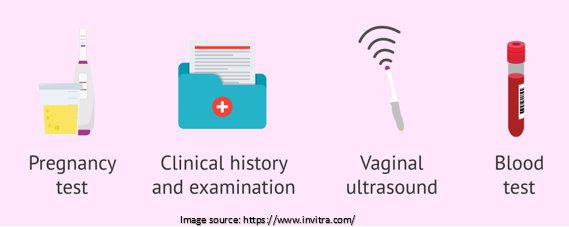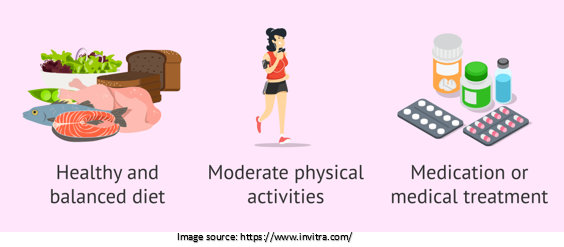Amenorrhea is the medical term for the absence of menstrual periods during a woman’s reproductive years, from puberty to menopause.Amenorrhea does not indicate infertility or constitute a disease. However, it might be a sign of a severe medical issue that needs to be addressed.
If you experience this problem, you can get comprehensive and result-oriented amenorrhea treatment in Mumbai at Budget Fertility Centre. Our facility is managed by a team of some of the reputed and best gynecologists in Mumbai, including Dr. Hrishikesh Pai, Dr. Rishma Dhillon Pai, and Dr. Rohan Palshetkar. These renowned medical professionals are at the forefront of delivering first-rate, patient-centered care. They have an unmatched dedication to their patients.
Being one of the top gynecology centres, we provide top-notch medical care for various gynecological conditions, including infertility, fibroids, endometriosis, vulval disorders, menopause, etc.
In this article, we will discuss the signs, causes, and treatments for secondary amenorrhea.
Overview of Amenorrhea
Amenorrhea, as previously mentioned, is the absence of one or more periods. Around the time of puberty, menstruation begins, and it ends with menopause. A woman has a menstrual cycle every month, except when pregnant or nursing.
There are two forms of Amenorrhea:
- Primary amenorrhea is when periods do not begin by age 15. Anatomical problems could also be the reason, although hormonal changes are typically to blame. Although uncommon, you should get medical attention if it does.

- Secondary amenorrhea is the absence of regular menstrual cycles for at least three months or irregular menstrual periods for at least six months.
Now, let’s discuss,
Causes of Secondary Amenorrhea
Many conditions that affect the menstrual cycle, such as pregnancy, anovulation, oestrogen deficiency, and obstructions of the reproductive tract, can result in secondary amenorrhea. In addition, some lifestyle choices may make secondary amenorrhea more likely.
- Pregnancy: Due to the absence of menses in pregnant women, pregnancy is the most frequent cause of secondary amenorrhea. Every woman of childbearing age who exhibits secondary amenorrhea should have the possibility of pregnancy routinely investigated.
- Anovulation: Ovulation not occurring or an egg not being able to be released during the menstrual cycle is referred to as anovulation. This causes an imbalance in the oestrogen and progesterone hormones. It prevents the endometrium, the inner layer of the uterus, from thickening and shedding as it normally would during menstruation.
Several conditions can cause anovulation, such as:
- Hypothyroidism- Low levels of thyroid hormones characterize it.
- Hyperprolactinemia – Characterized by high levels of prolactin.
- Polycystic ovary syndrome (PCOS) – The ovaries are enlarged and have small cysts.
- Medications – Some drugs, including antidepressants, may also cause anovulation. Notably, ovulation is prevented by hormonal birth control pills by reducing the release of follicle-stimulating hormone (FSH) and luteinizing hormone (LH). These hormonal changes prevent the endometrium from thickening and may cause secondary amenorrhea.
- Oestrogen deficiency: Secondary amenorrhea can also be caused by oestrogen deficiency, a sex hormone released by the ovaries. The endometrium will be atrophic, or very thin, without enough oestrogen and may not be able to shed. Perimenopause, the stage of life before menopause, during which sex hormone levels are lower than usual, can cause an oestrogen deficiency. When the ovaries stop producing oestrogen before age 40, a woman may also suffer from an oestrogen deficiency. Oestrogen production is also decreased by hypothalamic-pituitary insufficiency, which manifests as low levels of LH and FSH.
- Obstruction in the reproductive tract: If there is any obstruction in the reproductive tract, menses typically cannot occur. One of the leading causes of flow obstruction is stenosis or narrowing of the lower reproductive system. Similarly, adhesions, or fibrous tissue in the uterus or cervix, can lead to Asherman syndrome and obstruct the menstrual flow. This syndrome typically manifests after dilating the cervix during surgical procedures like dilation and curettage. The endometrium is scraped to eliminate any extra tissue inside the uterus.
- Lifestyle changes: Any significant changes to one’s lifestyle can impact hormone levels, which could lead to secondary amenorrhea. Menstruation may be delayed due to excessive stress, rigorous athletic training, and severe eating disorders.
Let’s know,
Signs and Symptoms of Secondary Amenorrhea
- The underlying cause of secondary amenorrhea typically involves the signs and symptoms of the condition. Early symptoms of secondary amenorrhea often include nausea, exhaustion, and breast tenderness.
- PCOS is commonly characterized by excessive hair growth (hirsutism), acne, weight gain, and trouble getting pregnant. People with hypothyroidism may experience fatigue, dry, flaky skin, hair loss, and changes in the color, shape, and growth of their nails. Hypothyroidism can also cause palpitations or sudden prominent heartbeats.
- Symptoms of hyperprolactinemia include headaches, blurred vision, and milky nipple discharge (i.e., galactorrhea).
- Usually, hot flashes, mood swings, and bone thinning accompany oestrogen deficiency.
- Finally, abdominal pain is a common symptom of reproductive tract obstruction.

Diagnosis of Secondary Amenorrhea
A physical examination and evaluation of the patient’s medical history are the basis for the diagnosis. The history should include a complete menstrual history, including the most recent period’s date and overall menstrual pattern. The use of any form of contraception should also be mentioned. Your gynecologist doctor in Mumbai will evaluate any accompanying symptoms and signs during the physical examination.
The doctor may order additional diagnostic tests such as blood and urine tests to determine the potential cause. Always perform a hCG test to rule out pregnancy. By checking the levels of thyroid-stimulating hormones, hypothyroidism should be ruled out if thehCG test is negative. Then, it is common to practice examining the levels of sex hormones like FSH, LH, oestrogen, and progesterone.
Prolactin levels may also be checked if hyperprolactinemia is suspected. Additional diagnostic procedures, such as CT scans or MRIs, may be carried out to ascertain whether a pituitary tumor is present.

Treatment for Secondary Amenorrhea
- It is essential to identify and treat the underlying cause of secondary amenorrhea to treat it. Progesterone-containing or combined oral contraceptive pills (oestrogen and progesterone) are used to treat the majority of PCOS cases to control the menstrual cycle.
- Thyroid hormones are often prescribed for hypothyroidism, which hastens the return of menstruation.
- In the meantime, pituitary tumour removal or dopamine agonists are used to treat hyperprolactinemia.
- Depending on the patient’s age, signs, and other risk factors, hormone replacement therapy may treat ovarian failure.
- A thin, flexible tube is inserted into the uterus to treat cervical stenosis and Asherman syndrome using hysteroscopic surgery.
Can Secondary Amenorrhea Lead to Infertility?
- Infertility cannot be brought on by secondary amenorrhea, but it often shares some underlying causes with infertility.
- Every cause of anovulation impacts a woman’s ability to get pregnant.
- Fertilization is unlikely to happen naturally if the ovaries do not or only occasionally release eggs.
- Adhesions between the uterine walls could complicate pregnancies.
- If the root causes are untreatable, assisted reproductive treatment like IVF may be recommended.
Keeping track of your period dates is crucial. Please keep track of the day your period begins, its duration, and any troublesome symptoms you experience. Know when your menstrual cycle changes, and consult your gynecologist in Mumbai if you have any concerns







